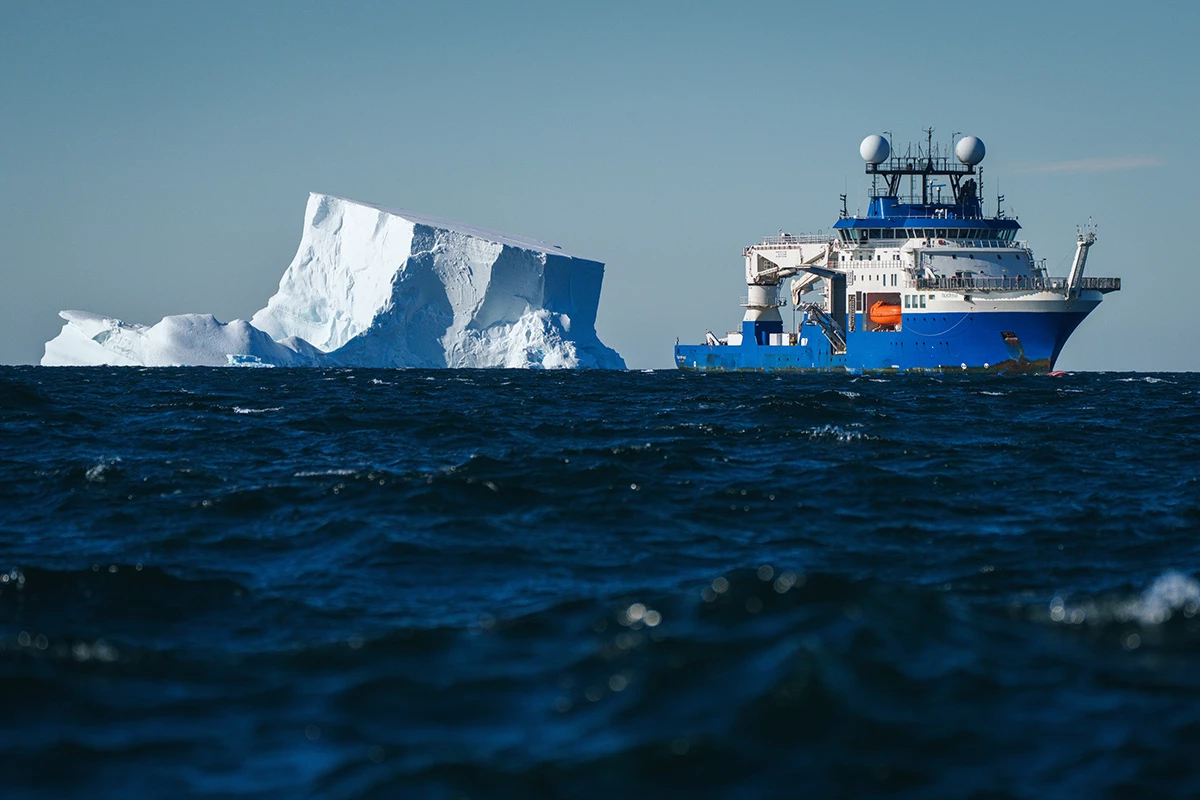Literally a century after it was first discovered, we now have footage of the colossal squid alive in its natural habit for the very first time for your viewing pleasure.
A member of the glass squid family (Cranchiidae), the colossal squid (Mesonychoteuthis hamiltoni) was first identified in 1925. A research team on board Schmidt Ocean Institute’s Falkor (too) research vessel spotted a baby specimen last month while on an expedition near the South Sandwich Islands in the South Atlantic Ocean.
This one was captured on film using a remotely operated vehicle at a depth of 1,968 feet (600 m) during the team’s 35-day expedition to uncover new marine life. It’s a juvenile squid, about 0.98 ft (30 cm) long, with a transparent body, iridescent eyes, trademark hooks on the middle of each of its eight arms, and clubs on its two long tentacles. Get a good look in the clip below:
Colossal Squid, 1st Live Observation | Searching for New Species in the South Sandwich Islands
If you’re looking at this and wondering why this colossal squid doesn’t resemble the hefty red one you saw being pulled aboard a fishing boat back in 2007, good eye! That’s because this species starts out transparent, and loses its see-through appearance as it ages. Dr Kat Bolstad, associate professor at the Auckland University of Technology Lab, noted that the red coloration seen in the arms suggests this creature could switch between looking transparent to opaque.

Alex Ingle / Schmidt Ocean Institute
Those hooks on its arms also help differentiate colossal squid from from glacial glass squid (G. glacialis), which the team incidentally also spotted during a separate encounter. The other big difference between these seemingly similar species is that colossal squid are estimated to reach up to 23 ft (7 m) long and weigh as much as 1,100 lb (500 kg), while the glass squid is believed to only grow up to 20 inches (50 cm).

ROV SuBastian / Schmidt Ocean Institute
The footage is remarkable because these squid are extremely hard to spot, and typically operate at great depths.
“For 100 years, we have mainly encountered them as prey remains in whale and seabird stomachs and as predators of harvested toothfish,” said Dr. Bolstad.
It’s never been seen alive on video before. And when it was first named 100 years ago, the species was described by looking at partial specimens found in the stomach of a sperm whale.

Alex Ingle / Schmidt Ocean Institute
If you’re into stories about the wonders of the oceans like this one, check out our recent piece about building an AI translator to help understand dolphins, a finding about just how massive Megalodon might actually have been, and the surprising reason behind killer whales sinking luxury yachts.
Source: Schmidt Ocean Institute